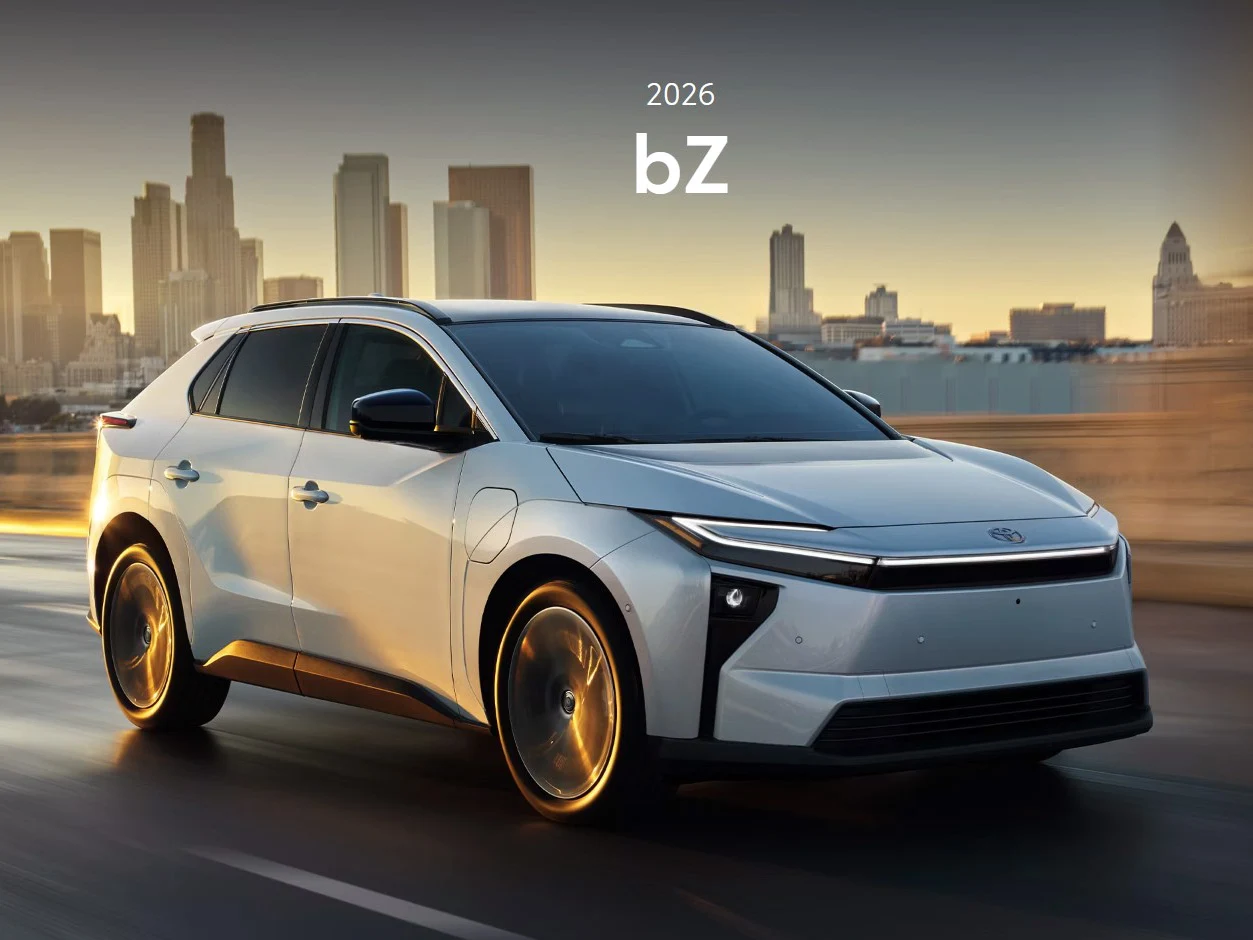Key Takeaways
1. Toyota plans to implement Tesla’s North American Charging Standard (NACS) for its electric vehicles starting in 2025, beginning with the 2026 bZ SUV.
2. The 2026 bZ SUV features a built-in NACS port, achieves over 300 miles per charge, and has a 25% improved range compared to the previous bZ4X model.
3. Manufacturing costs for the bZ SUV have been reduced by 40% through advanced techniques and the use of LiFePO4 EV batteries.
4. The 2026 bZ offers enhanced performance with all-wheel-drive variants delivering up to 338 HP, improved interior comfort, and upgraded technology features.
5. The success of the bZ line in the US market will depend on the pricing details, which will be announced after June.
Back in 2023, Toyota shared its plans to implement Tesla’s North American Charging Standard (NACS) for its electric vehicles in the US, set to begin in 2025. Now, we see the results in the form of the 2026 bZ SUV.
Improved Specifications
The new bZ series comes with a built-in NACS port and boasts significant improvements over the previous bZ4X model that was available in the US.
With the XLE FWD Plus trim, the latest Toyota bZ can achieve over 300 miles per charge, thanks to its 75 kWh battery, representing a notable 25% enhancement in range.
Pricing and Manufacturing
Although Toyota plans to announce the pricing for the 2026 bZ SUV closer to its release in the US, the automaker hinted that it has successfully reduced manufacturing expenses by 40% by utilizing advanced gigacasting techniques and its LiFePO4 (lithium iron phosphate) EV battery.
In addition to the NACS port granting the bZ access to the entire Tesla Supercharger network in the US, it also features Level 1/2 AC charging through an upgraded 11 kW onboard charger and a dual-voltage charging cable.
According to Toyota, charging from 10% to 80% now takes just 30 minutes, and new battery preconditioning technology has been introduced to enhance charging efficiency in colder temperatures.
Performance and Comfort
The all-wheel-drive variants can deliver up to 338 HP, allowing for a maximum range of 288 miles per charge. The 50% performance boost is accompanied by a more aggressive design.
Toyota has also focused on the comfort of the interior, providing heated seats and steering wheels as standard features, with vented seats available as an option. A redesigned dashboard includes a larger multimedia display, two wireless charging pads, and a 64-color ambient lighting system to enhance the experience for both drivers and passengers.
The 2026 bZ addresses concerns from its predecessor by offering increased space for both passengers and cargo. It comes with 42 inches of front legroom and 35 inches in the rear, along with 28 cubic feet of cargo capacity in the trunk.
Toyota claims that the new bZ line now provides a much improved throttle feel and dynamic suspension performance, featuring its patented Grip Control and X-Mode driving functions that adapt automatically to varying road conditions.
In summary, Toyota appears to have a strong contender in the electric SUV market in the US with a direct connection to Tesla Superchargers, but its overall success will hinge on the pricing details for the bZ line, which are expected to be revealed after June.
Source:
Link


Leave a Reply